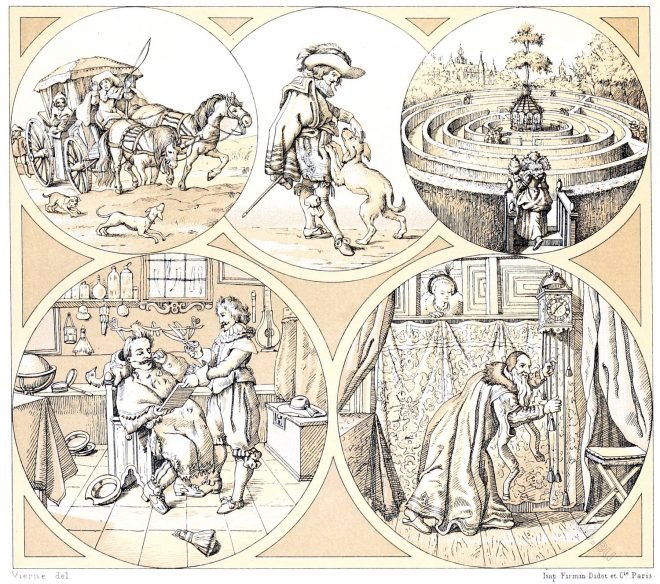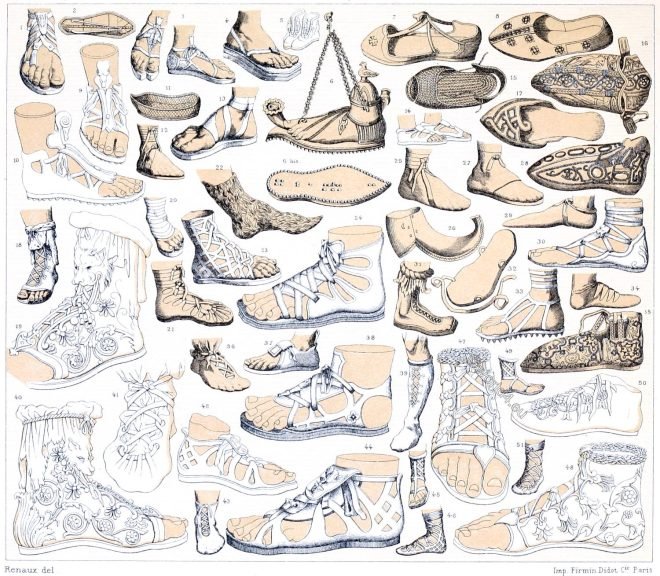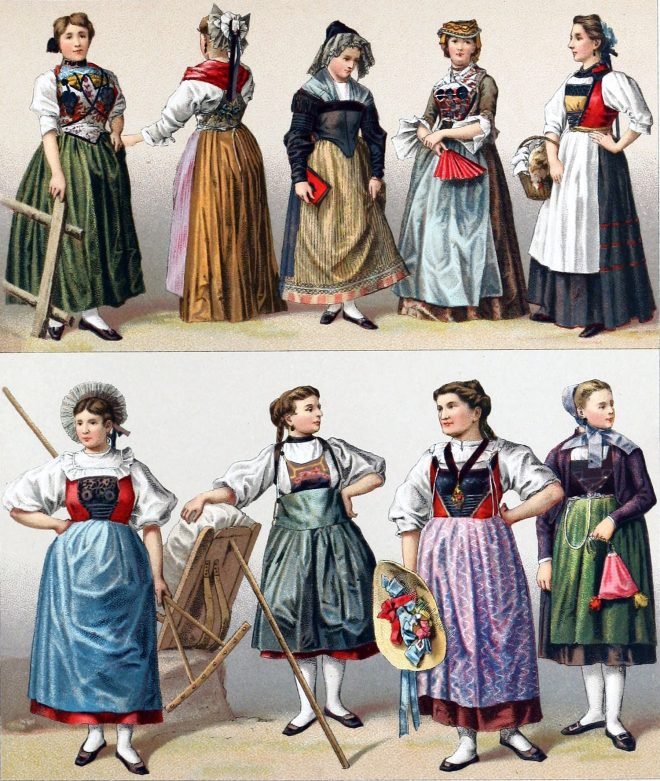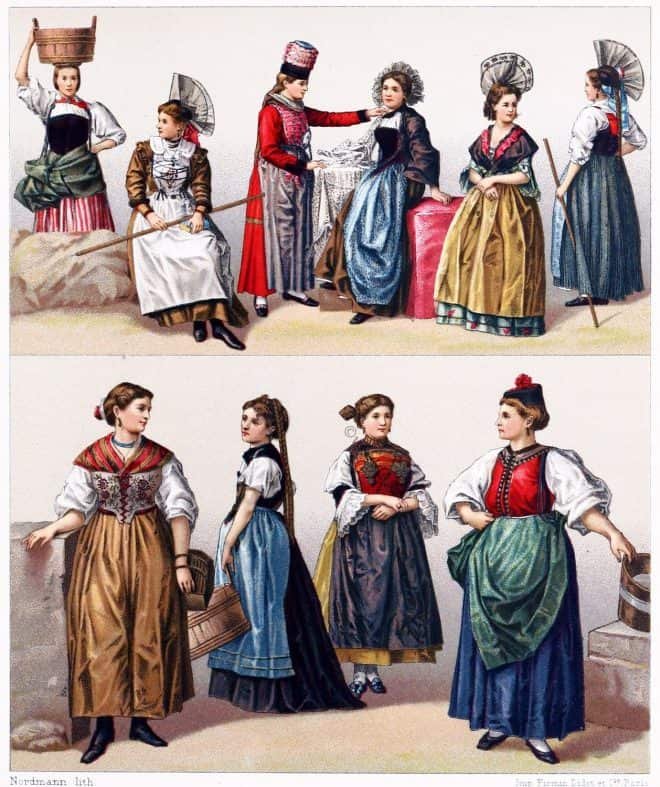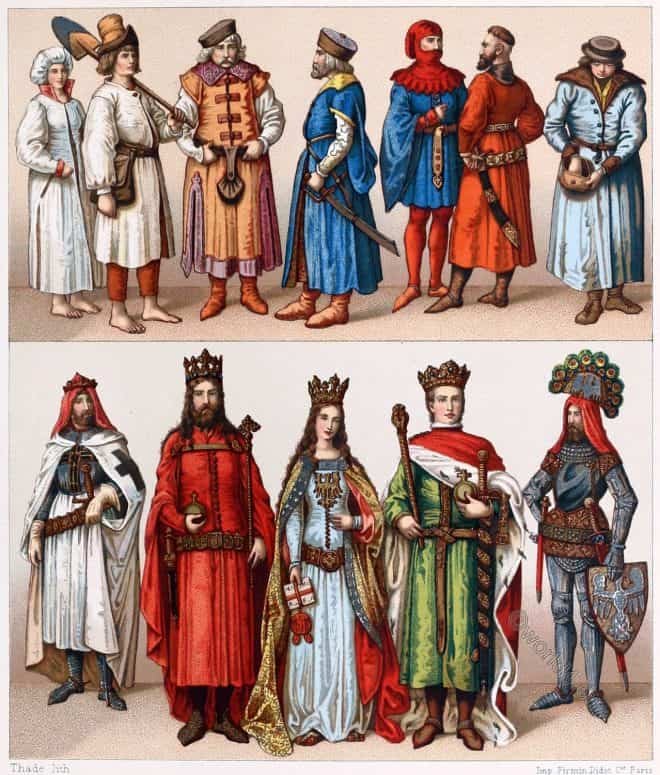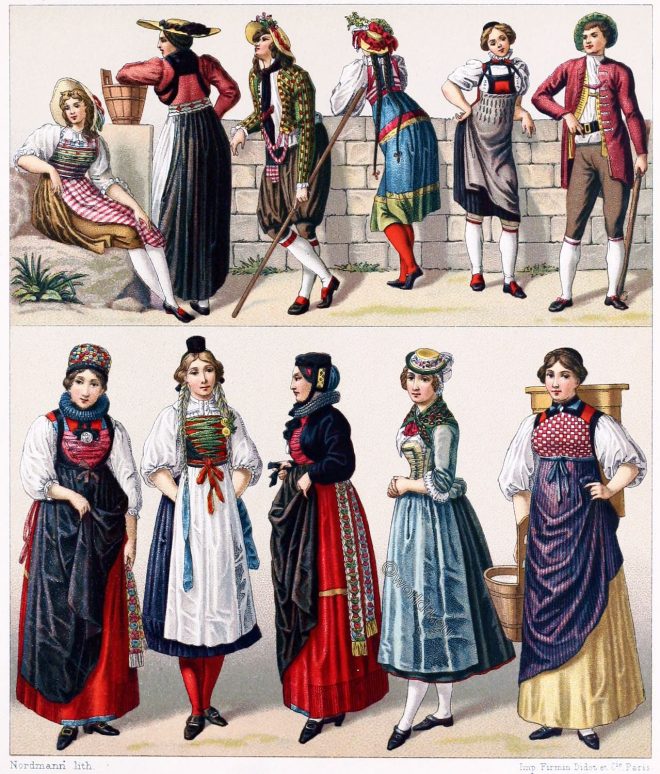Netherlands 17th century. The coach. The hedge labyrinths. Types from the distinguished, bourgeois and mercantile world.
Tag: Auguste Racinet
The Costume History in Chronological Development by Auguste Racinet. Edited by Adolf Rosenberg. Berlin 1888.
Rome. Furniture and Appliances of Antiquity. Pompeii, Herculanean.
Marble Curulian armchair, Bedstead, Iron suitcase, Terracotta casting vessel, Four-legged table.
Shoes of antiquity. Sandals, closed footwear of the ancient world.
Classical Antiquity. Footwear. Fashions and Customs. Calceus, Ocrea, Caliga, Campagus, Crepida, Solea, Pero, Ceremonial shoes, Runner’s boots, Lace-up shoe.
Women’s costumes from the Swiss cantons at the end of the 19th century.
Women’s costumes from the Swiss cantons, Unterwalden, Sankt Gallen, Bern, Valais, Zurich, Zug, Lucerne and Basel.
Russian Women’s, Boyars, Cossacks and Nobility costumes.
Russia 16th and 19th century. Historical persons and folk costumes.
Switzerland. Female costumes from Berne, Appenzell, Fribourg and others.
Traditional female Swiss costume fashion from the cantons of Bern, Appenzell, Fribourg, Uri, Lucerne, Schwyz and Unterwalden.
Polish Costumes in the Middle Ages. Typical and historical figures.
Clothing in Poland in the 14th and 15th centuries. Typical and historical figures.
Swiss folk costumes at the beginning of the 19th century.
Swiss folk costumes from the cantons of Lucerne, Fribourg, Zug, Bern, Schwyz, Schaffhausen and Valais at the beginning of the 19th century.
Swedish Costumes of Country People. Norwegian Wedding.
Swedish costumes of the country people from Dalarna, Leksand, Mora, Skåne. Bride and groom from Hitterdalen in Norway.
France. Historical folk costumes from the Bordeaux area.
France Bordeaux. Folk costumes from Gradignan, Caudéran, Pessac, Laroque, Blaye. First half of the 19th century.

